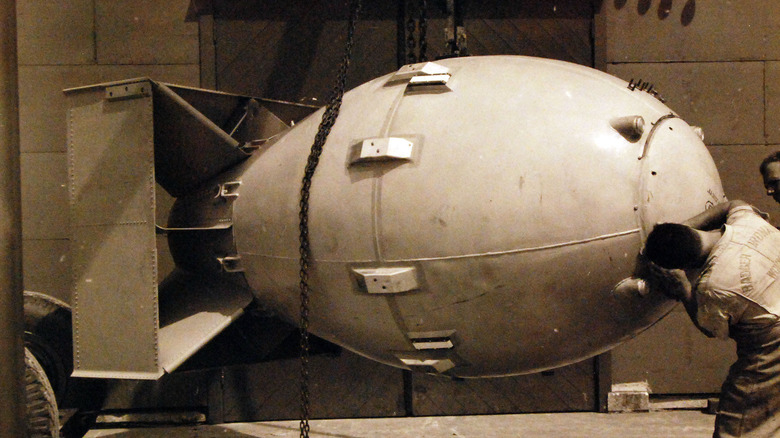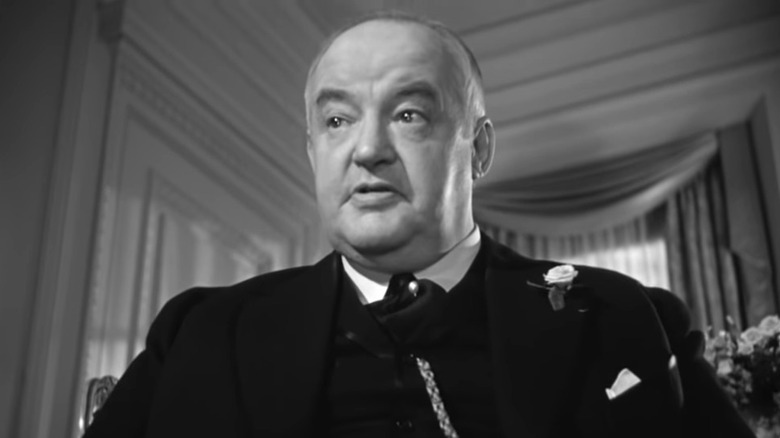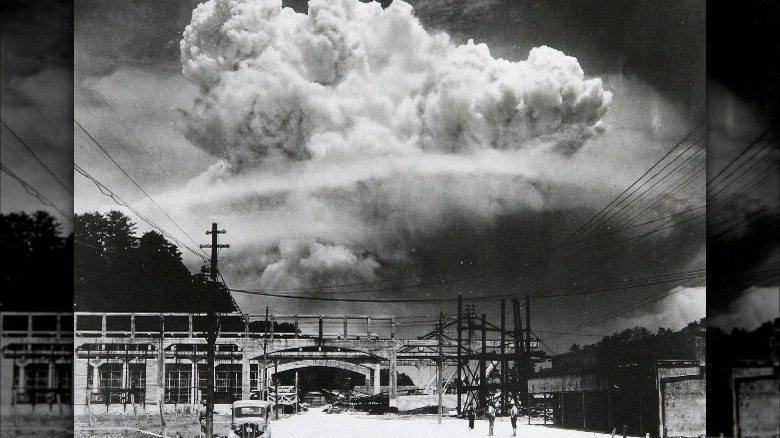How A 1941 Noir Film Inspired A Name For An Atomic Bomb
We may receive a commission on purchases made from links.
In 1943, during World War II, the University of California and the United States Army Corps came to an agreement and established a secret laboratory — the Los Alamos Laboratory — in New Mexico. It was the site for the Manhattan Project, which was a program for developing nuclear weapons to be used in the war. Research, development, and testing were done on the secret site, and scientist J. Robert Oppenheimer served as its head, according to the National Park Service.
In 1941, the noir film "The Maltese Falcon," based on a 1930 novel of the same name, was released in theaters. The film stars Humphrey Bogart as Private Detective Sam Spade and focuses on a case brought to him by a mysterious woman named Ruth Wonderly, played by Mary Astor. "Maltese Falcon" was nominated for three awards at the Oscars and is among the few movies included in the Library of Congress' National Film Registry. Apart from being one of the greatest films of all time, one of the characters in the movie also became the inspiration for the name of an atomic bomb developed for World War II.
Naming the atomic bomb
Robert Serber was a physicist who was J. Robert Oppenheimer's protégé, and he was recruited to be the head of the laboratory for the Manhattan Project, as noted by Dangerous World. His main task was to explain the goals and principles to incoming staff, and he also did lectures about the design and construction of atomic bombs. Everyone working on the project had to be efficient, as there was an urgency to complete the goal. Not only was Serber great at explaining scientific concepts, but he was also creative when it came to naming atomic bombs.
According to Serber, he named the bombs based on their shapes, and one of them was the "Fat Man." In his memoir, "Peace & War: Reminiscences of a Life on the Frontiers of Science," he revealed the inspiration for the name. "The name the Fat Man for the implosion bomb followed naturally, after Sydney Greenstreet's role in 'The Maltese Falcon.'" he wrote. In the film, Sydney Greenstreet played the character of arch-villain Kasper Gutman, who was dubbed the Fat Man due to his large physique.
The Fat Man
According to the Bradbury Science Museum, the Fat Man was an implosion-type plutonium bomb that weighed 10,800 pounds. It was shaped like a wide sphere, much like a gigantic egg. Its length reached 11 feet, it measured 5 feet wide, and was painted yellow. The team that assembled the bomb wrote messages on it, as noted by The New Yorker. Some wrote their names, while others had notes for the Japanese, such as, "Here's to you!" On the tip of the Fat Man was the acronym "JANCFU" — Joint Army-Navy-Civilian F*** Up.
On August 9, 2945, B-29 Bockstar, piloted by Major Charles Sweeney, dropped the Fat Man atomic bomb from 29,000 feet. It detonated 1,800 feet over Nagasaki, Japan, near the Mitsubishi factories in the industrial valley with the force of about 20,000 tons of TNT (via the National World War 2 Museum). Although thousands of civilians have already been evacuated from the area, the immediate death toll was reported to be 40,000. Others who survived the attack were left with severe burns and poisoning that killed them later. In total, more than 100,000 deaths were recorded as a result of the bombing of Nagasaki.


